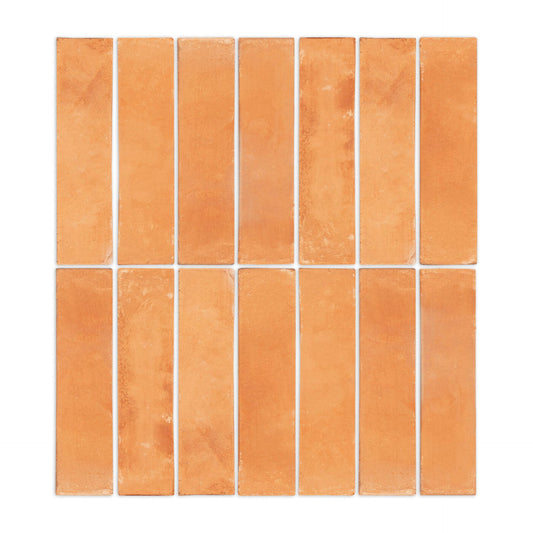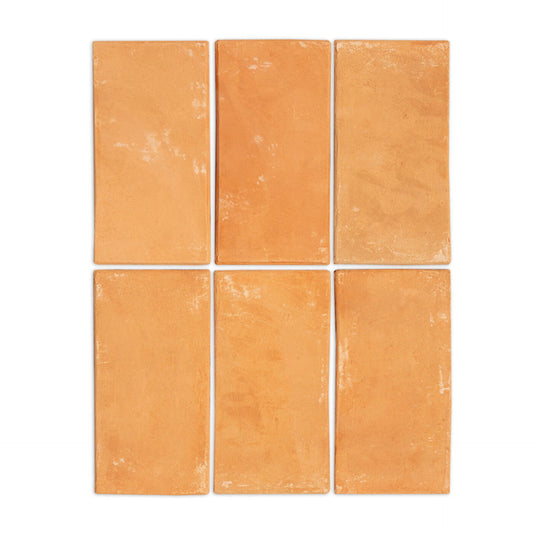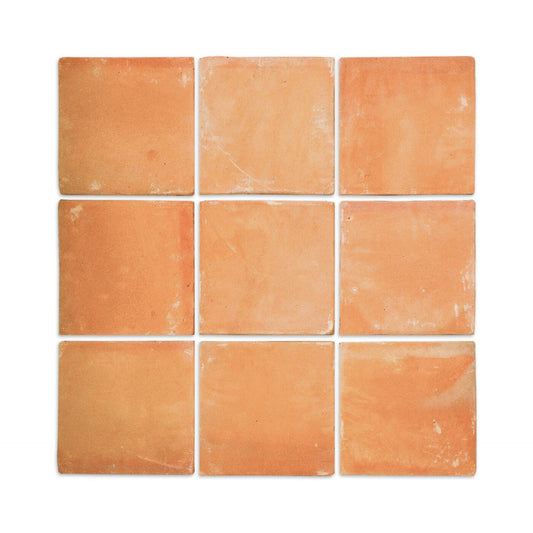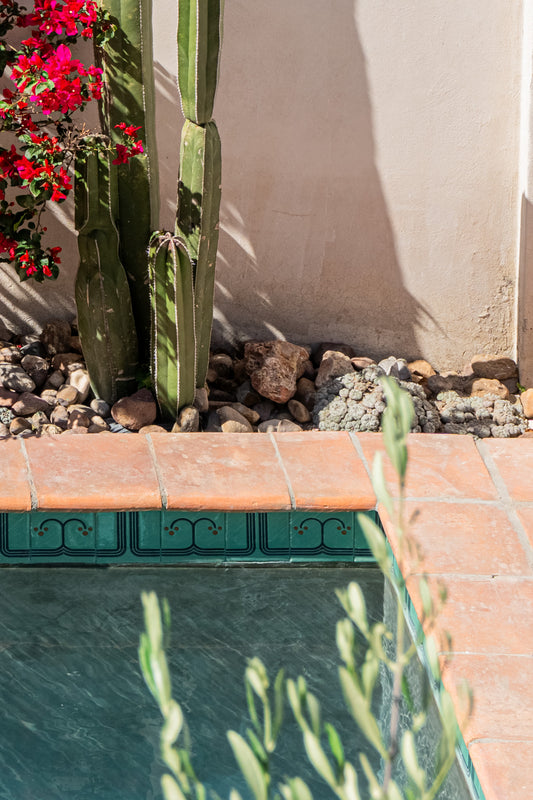

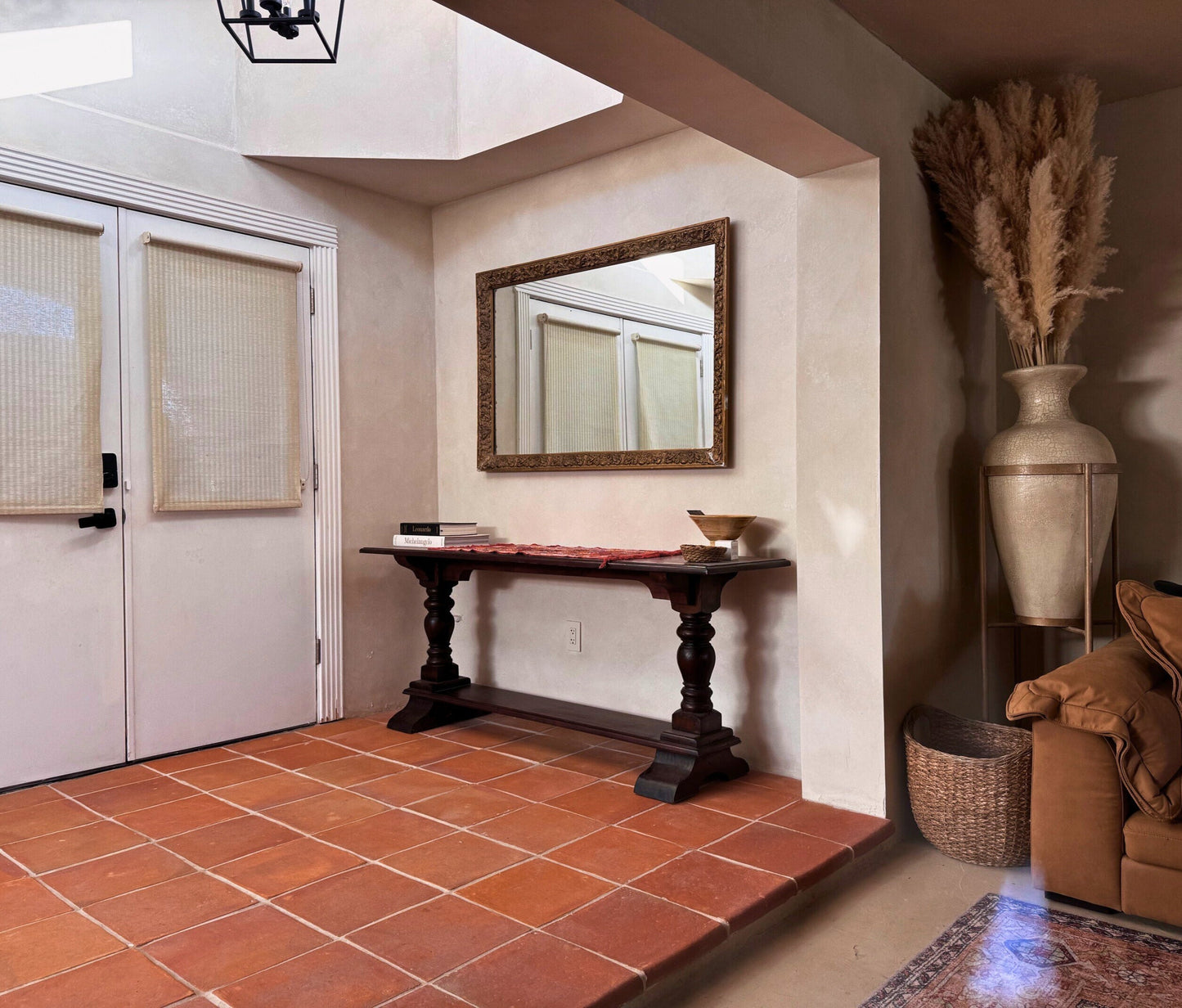















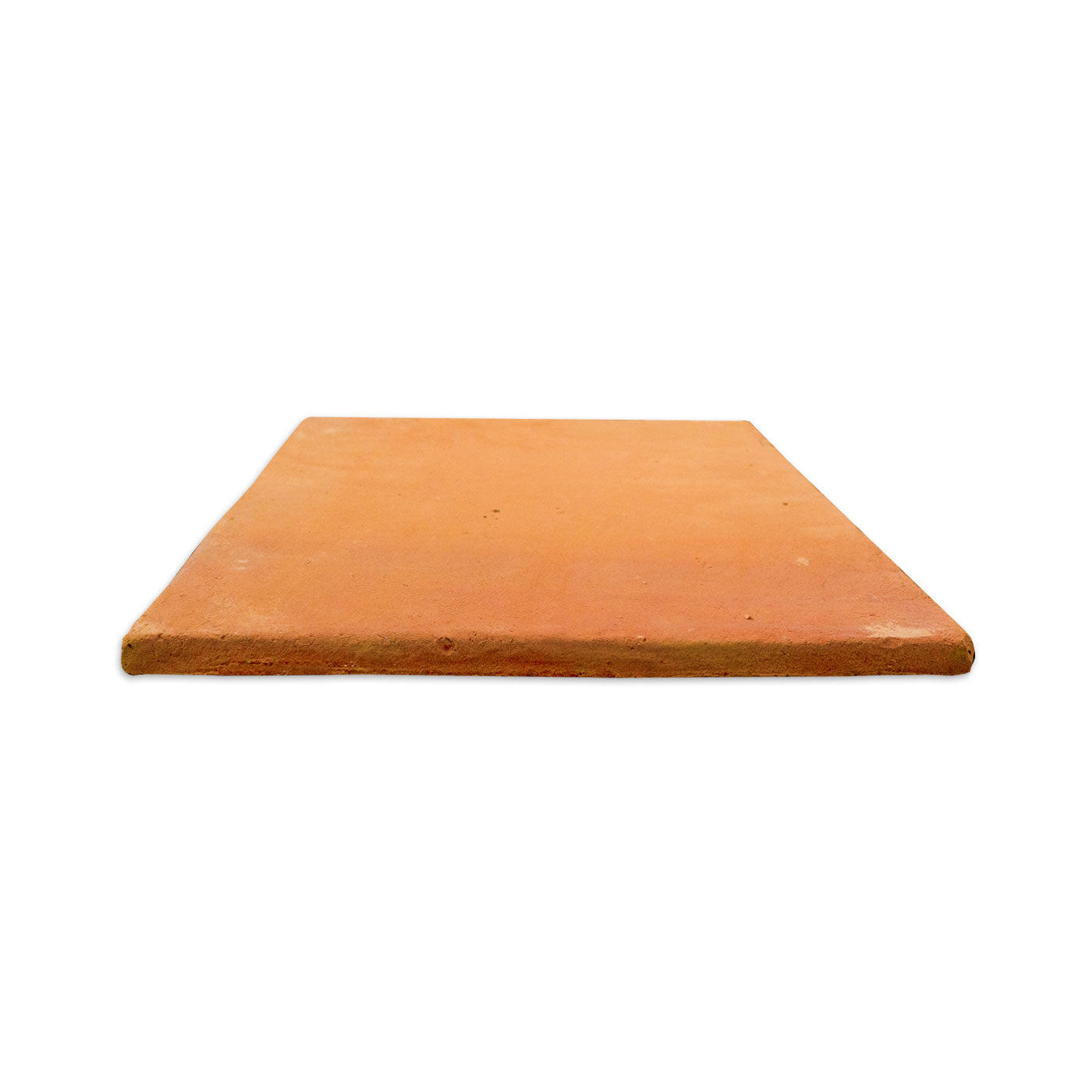
From inspiration to installation
PRODUCT DETAILS
HOW IT'S MADE
Clay, water and fire. That’s all the ingredients it takes. Produced in Guanajuato, Mexico and has been commonly used in the city of San Miguel De Allende in its most renowned and historic buildings for decades. It’s guaranteed that you’ll come across this iconic flooring in the UNESCO World Heritage town.
GROUT
TYPE
- For a modern and sleek look, we recommend Mapei Ultracolor Plus FA grout.
- For a traditional look, we recommend Mapei Saltillo Natural Gray Grout.
JOINTS
Organic Terracotta tile joint spacing can be as wide as 3/4” and go as small as 1/4.” Generally, smaller joint sizes are used with smaller tiles (6” and under) and tend to look more modern.
Larger joints are used with larger format tiles to accommodate for irregular sizing of handmade tiles while maintaining straight joints and their traditional aesthetic.
TRIM
Ready to add those final touches to your tile project? Here's how different trim options can enhance your design:
Coping:
Ideal for stair finishing, offering a smooth, curved design for a polished appearance.
Miter Cut:
Easily create 45-degree angles for corners, niches, and edges with miter cuts. You can also customize standard pieces for unique trim.
Grout, Paint, or Caulk:
Achieve a polished finish by easily applying grout, paint, or caulk along the trim edges.
Exposed Edge:
Embrace the natural look by leaving edges unfinished, remember to seal your edges!
MILD MAINTENANCE
Regular maintenance is crucial for preserving the beauty and durability of your tile flooring. Here's a comprehensive guide to keep your terracotta tile looking pristine:
1. Regular Cleaning:
To maintain cleanliness, regularly sweep, dust, or vacuum your terracotta tile. Opt for a soft-bristled broom or a vacuum cleaner. For deeper cleaning, use a damp mop with warm water and our Palo Santo Cleaner Concentrate to remove dirt and grime.
2. Avoid Harsh Chemicals:
Steer clear of bleach or ammonia, as they can harm or discolor the tile. Instead, utilize pH-neutral cleaners like soap or household non-acidic cleaners. These effectively remove stains without damaging the tile. When cleaning, use a soft cloth or mop to prevent scratching.
3. Tackle Tough Stains Carefully:
For stubborn stains, consider using a slightly more abrasive cleaner after testing it on a hidden area first. Ensure thorough removal of cleaning solution residue to maintain the tile's luster.
4. Prompt Spill Cleanup:
Address spills promptly to prevent staining. Use a soft cloth with warm water or a pH-neutral cleaner for effective spill removal.
5. Prevent Scratches:
While terracotta tile is durable, it's still susceptible to scratches. Avoid dragging heavy furniture across the tile and utilize furniture pads to prevent scratches.
6. Utilize Rugs:
Place mats or rugs in high-traffic or moisture-prone areas like entryways or kitchens to minimize wear and tear. Opt for felt or cloth pads under rugs to prevent potential damage from rubber padding.
7. Wet Areas Maintenance:
For wet areas such as shower surrounds or exterior applications, periodically apply a protective sealant. While not mandatory, sealant adds an extra layer of protection by sealing micropores, ensuring your tile remains in optimal condition.
By adhering to these maintenance practices, you can prolong the lifespan and beauty of your terracotta tile flooring.
SEALANT
Yes, sealing is required for Organic Terracotta. Our tiles arrive to you unsealed, and to protect them from water absorption and maintaining their natural beauty, we strongly suggest applying sealant before and after installation. We recommend using our Ultra-Low VOC sealer for optimal results. However, other sealers can also be used for other sheen and durability requirements; we advise testing your chosen sealer on a few tiles before full application to ensure compatibility and desired results.


























